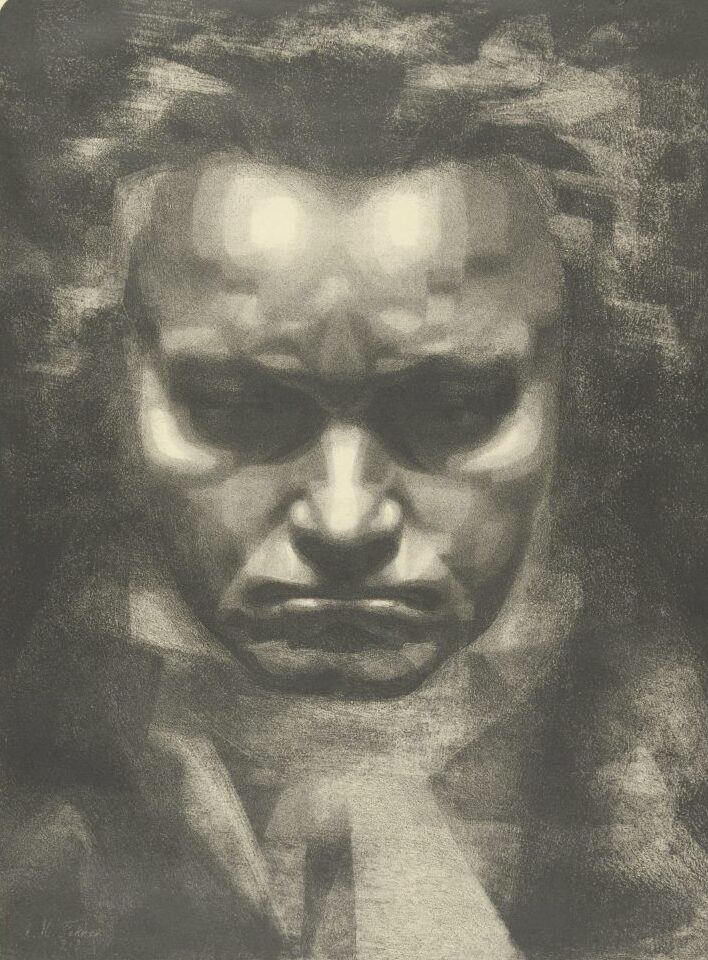Ludwig van Beethoven was as remarkable in his physical presence and personality as he was in his groundbreaking compositions. His appearance and character, marked by contradictions and intensity, offer a window into the man behind the music. This article, mostly based on Marion Scott’s biography Beethoven, explores his physical traits, personal habits, and vibrant personality, enriched with anecdotes that bring his complex character to life.
Marion Margaret Scott (1877–1953), an English violinist, musicologist, and writer, left an important mark on music scholarship with her 1934 biography, Beethoven, published by J.M. Dent & Sons as part of the Music Masters Series. A respected figure known for her work on Haydn, advocacy for women in music, Scott brought meticulous research and vivid prose to her only full-length book. Her Beethoven remains a classic, offering a richly detailed and humanizing portrait of the composer through historical accounts and anecdotes.
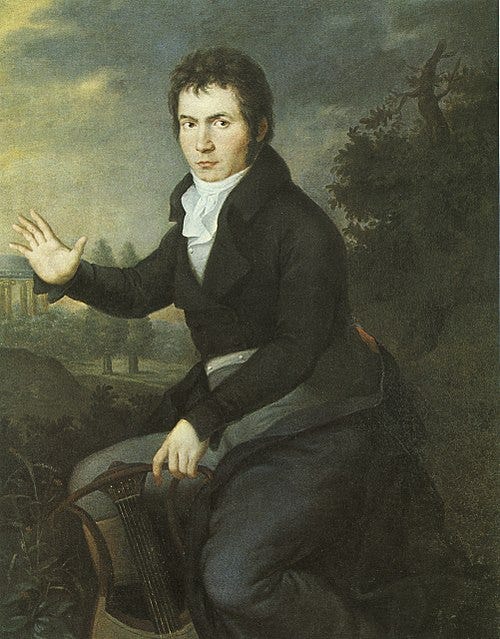
Physical appearance
Beethoven’s physical appearance was a striking mix of ruggedness and expressiveness, reflecting the intensity of his inner world. Standing between 160-165 centimeters (5 feet 2 – 5 feet 5 inches), he had a broad, muscular build that belied his short stature. His short legs gave him a stocky appearance, but his fine torso, often hidden under carelessly worn clothes, suggested strength. His hands, broad and red with short fingers, were clumsy in daily tasks, but transformed into instruments of beauty on the piano, producing music that moved listeners to tears.
His head was large, dominated by a broad, noble forehead, often cited as his most handsome feature. His nose, described as square or four-cornered like a lion’s, symbolized strength. His mouth was broad, with a slightly protruding lower lip and a deep cleft in his chin that became more pronounced with age. His teeth, even and white, were a rarity in his era. Beethoven’s hair was a wild, dark mane, standing out in tumbled masses, possibly due to an “extra charge of electricity” in his constitution. By 1816, it turned steel-grey, and by his death in 1827, it was white.
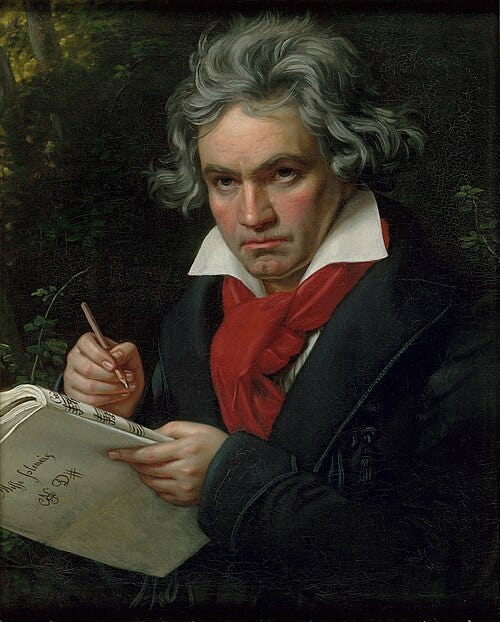
His eyes were his most captivating feature, described as having terrifying power. Observers noted varying colors – black, bluish-grey, or brown – suggesting they changed with his emotions, possibly a flecked hazel-grey or blue-grey base. Short-sighted until around 1817, he wore glasses. John Russell, a British aristocrat, noted his wild and disheveled looks, with eyes full of stormy energy and hair not tamed by comb or scissors for years.
In his later years, Beethoven’s appearance grew more disheveled. He typically wore light trousers and an old blue or green coat with a low top-hat pushed back on his head, though he owned a finer brown coat with mother-of-pearl buttons. His living spaces were chaotic, filled with manuscripts, old clothes, and dust, making visits an adventure for guests.
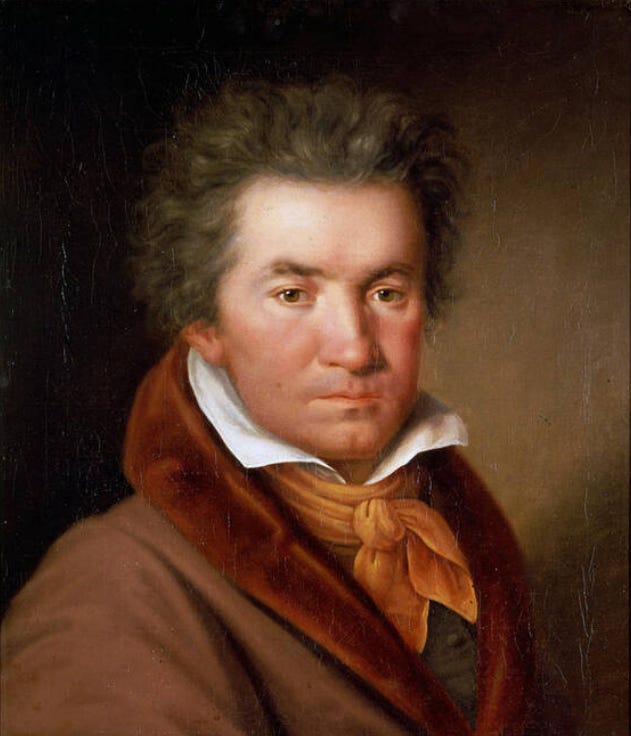
Personal characteristics
Beethoven’s personality was as dynamic as his music, marked by contradictions and intensity. He was quick in his movements and impatient with slowness, reflecting the urgency of his creative mind. His nature oscillated between carelessness and care: as a schoolboy, he was indifferent to dirt, but in Vienna, he took dancing lessons and wore fine clothes like black silk stockings and a cravat made by Eleonore von Breuning. When absorbed in composing, however, he reverted to disarray, his focus solely on his art.
His hygiene habits were eccentric. He washed thoroughly every morning and, when deep in thought, poured water over his hands or emptied a jug of cold water over his head while composing, sometimes soaking the floor (and the apartment below). Shaving was a challenge, often leading to comical incidents. His voice, loud and harsh due to his deafness, lacked modulation, and his singing was raucous. His laughter was equally loud and somewhat frightening. As his hearing deteriorated, he relied on conversation books, writing down questions and answers, underscoring his growing isolation.
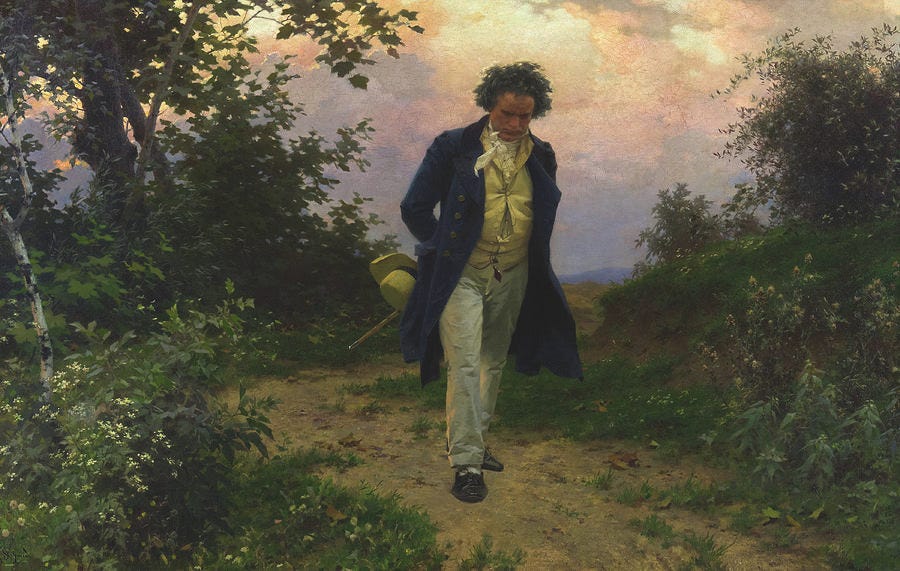
Beethoven was humorous, warm-hearted, and sensitive, yet his crabbiness and short temper often alienated people. He was rebellious, with a charisma that made him highly attractive to women. His rebelliousness against his weaknesses was a source of strength. Despite hating to give piano lessons, he made exceptions for talented students or attractive women.
Anecdotes: glimpses into the man
Beethoven’s life was rich with anecdotes that reveal his vibrant character. At a party, when a lady praised his noble forehead, he cheekily offered it for a kiss. During a shaving session, he embraced Ries so enthusiastically that he transferred soap to his pupil’s face, leading to shared laughter. In 1816, Major-General Kyd visited Beethoven, finding him shaving with a face disfigured by cuts and soap. When Kyd offered money for a symphony in an earlier style, Beethoven angrily rejected it, later claiming he threw him downstairs.
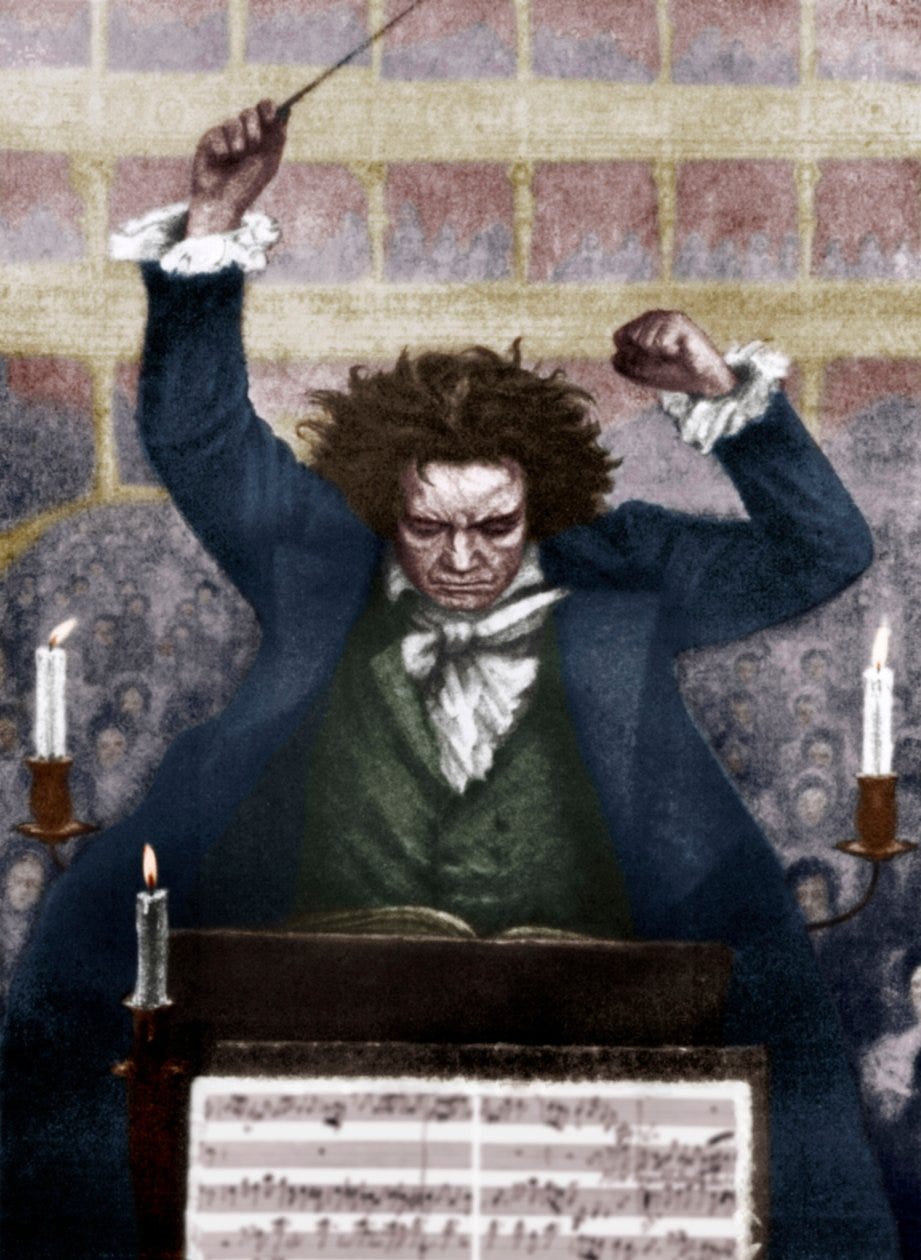
Beethoven’s humor was robust and often crude. At the pub, he spent evenings drinking wine and beer, eating cheese and kippers, and reading papers. Once, upon seeing a man with an ugly face, he left, calling him rascally. He was crude to his friend Ignaz Schuppanzigh, calling him a wretched dog and telling him not to return. In a letter to his brother Johann, he used swearwords like the housekeeper’s arch pig and miserable scoundrel. He wrote notes on window shutters in Baden, which the landlord sold as autographs, amusing Beethoven when he learned of it. He affectionately called Gerhard von Breuning Trouser Button for clinging to him, showing his tender side. Beethoven’s shrewdness shone in his political commentary, predicting no revolution in Vienna as long as Austrians had beer and sausages.
Listen to an extended audio conversation on this topic on Popular Beethoven’s YouTube channel – supported by AI!
